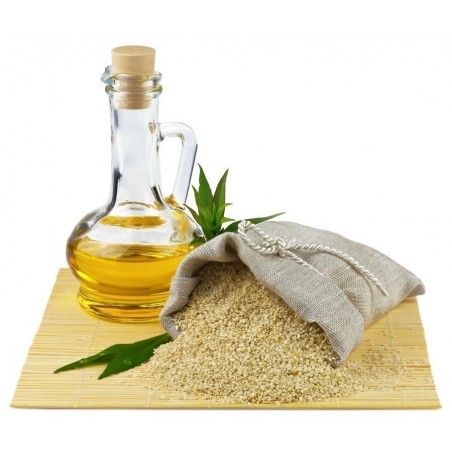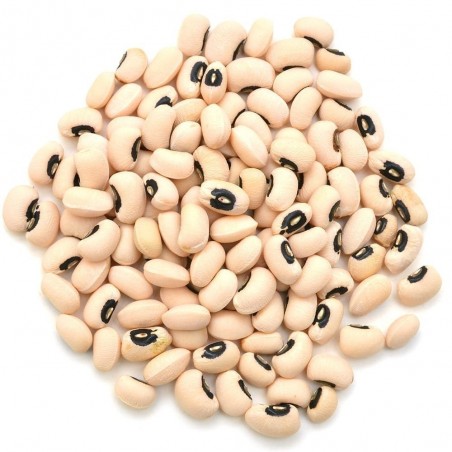
White Sesame Seed (Sesamum indicum)
White Sesame Seed (Sesamum indicum)
Price for Package of 1g (350) seeds.
Sesame (Sesamum indicum) is native to the Old Word tropics and is one of the oldest cultivated plants in the world. Sesame oil is not mentioned in the Bible, but appears to have been important in non-Hebrew cultures 2,000 to 4,000 years ago. It was a highly prized oil crop of Babylon and Assyria at least 4,000
White Sesame Seed (Sesamum indicum)
Price for Package of 1g (350) seeds.
Sesame (Sesamum indicum) is native to the Old Word tropics and is one of the oldest cultivated plants in the world. Sesame oil is not mentioned in the Bible, but appears to have been important in non-Hebrew cultures 2,000 to 4,000 years ago. It was a highly prized oil crop of Babylon and Assyria at least 4,000 years ago. Today, India and China are the world's largest producers of sesame, followed by Burma, Sudan, Mexico, Nigeria, Venezuela, Turkey, Uganda and Ethiopia. World production in 1985 was 2.53 million tons on 16.3 million acres. Sesame seeds are approximately 50% oil and 25% protein. They are used in baking, candy making, and other food industries. The oil contains about 47% oleic and 39% linoleic acid. Sesame oil and foods fried in sesame oil have a long shelf life because the oil contains an antioxidant called sesamol. Sesame oil is also used in the manufacture of soaps, paints, perfumes, pharmaceuticals and insecticides.
The expression "open sesame" made famous in the story of Ali Baba and the Forty Thieves, one of the tales from the Arabian Nights, is probably based on the sesame seed capsule. Some authorities have suggested that this expression was adopted by the author of the stories because the capsules burst open at maturity with the slightest touch. Other interpretations suggest that it comes from the popping sound of the mature pod as it opens, like the sudden pop of a lock springing open. Because of the shattering characteristic, sesame has been grown primarily on small plots that are harvested by hand. The discovery of an indehiscent (nonshattering) mutant by Langham in 1943 resulted in the development of a high yielding, shatter-resistant variety that retained its seeds during harvesting. Langham also discovered that indehiscent trait in sesame was controlled by one pair of recessive alleles. Apparently the title of "Sesame Street" is derived from the phrase "open sesame," presumably to inject curiosity and excitement into the title of this popular TV program for children.
According to Oplinger et al. (1990), the flowers of sesame are typically self pollinated, although they may be cross pollinated by insects. No insect pollinators were observed on the plants grown at Wayne's Word. The growth of sesame is indeterminant: the plant continues to produce leaves, flowers and seed capsules throughout the warm summer months and into the fall.
The flowers of sesame (Sesamum indicum) are similar in shape to devil's claw plants (Martynia and Proboscidea). In fact, sesame belongs to the same family Pedaliaceae, although some botanists have retained devil's claws in the Martyniaceae. Sesame seeds are an important seed crop. They are sprinkled on breads, cakes, cookies and candies and are the source of a valuable oil.
Sesame seeds from the herb (Sesamum indicum) are an important world seed crop. The tasty seeds are sprinkled on breads, cakes, cookies and candies and they are the source of a valuable oil. The cake remaining after pressing or extraction makes an excellent livestock food, and in times of famine is eaten by people. The seeds are eaten toasted, or crushed and sweetened to make the Middle Eastern candy known as halva. Middle Eastern tahini is sesame paste made from hulled, lightly roasted seeds. The black seeds (left) are unhulled. Hulled seeds (right) are white.
Flower of the North American Proboscidea louisianica ssp. louisianica. The yellow lines in the corolla throat are nectar guide lines that direct pollinator bees to the nectar source. This species was formerly placed in the Martyniaceae along with Martynia and Ibicella. It is now placed in the Pedaliaceae, along with sesame (Sesamum indicum), Uncarina and Harpagophytum.


Chwilowo nie możesz polubić tej opinii
Zgłoś komentarz
Zgłoszenie wysłane
Twoje zgłoszenie nie może zostać wysłane
Napisz swoją opinię
Recenzja została wysłana
Twoja recenzja nie może być wysłana
🌍 Wysyłka na cały świat z UE
Wysyłamy zamówienia na cały świat z Unii Europejskiej za pośrednictwem poczty poleconej z potwierdzeniem odbioru.
📦 Śledzenie przesyłki
Aby śledzić przesyłkę, zaloguj się na swoje konto i przejdź do sekcji Historia zamówień > Szczegóły, gdzie znajdziesz numer śledzenia.
Śledzenie międzynarodowe: 17Track
Dla numerów takich jak RGxxxxxxHR: Śledzenie Posta.hr
🕒 Uwaga: informacje o śledzeniu pojawią się dopiero po 24 godzinach od nadania.
⚠️ Ważne uwagi
Płatność za pobraniem nie jest możliwa.
Sprawdzaj folder SPAM / Niechciane w swojej skrzynce e-mail, aby nie przegapić powiadomień.
Korzystaj wyłącznie z formularza kontaktowego na naszej stronie.
Wiadomości wysłane bezpośrednio na e-mail mogą nie zostać odebrane.
📱 Numer telefonu wymagany
Podczas składania zamówienia koniecznie podaj numer telefonu komórkowego z kodem kraju.
Przykład: +48 123 456 789
🚚 Warunki dostawy
Dla przesyłek poleconych wymagany jest podpis odbiorcy (osoby, do której adresowana jest paczka).
Nie zamawiaj, jeśli:
chcesz, aby paczka została dostarczona do skrzynki pocztowej
nie będzie Cię w domu w czasie doręczenia
chcesz, by paczka została zostawiona u sąsiada (❌ to niemożliwe)
📬 Podanie adresu skrzynki pocztowej oznacza utratę prawa do zwrotu w razie zagubienia przesyłki.
↩️ Zwrot paczki i ponowna wysyłka
Jeśli paczka zostanie zwrócona do nas z jakiegokolwiek powodu:
Pokrywasz koszt zwrotu 2 €
Oraz koszt ponownego nadania
⏱ Opóźnienia i śledzenie
Jeśli śledzenie wskazuje, że paczka wciąż jest „u nadawcy”, oznacza to, że jest w transporcie.
Skontaktuj się z lokalnym urzędem pocztowym, podając numer śledzenia.
Nie jesteśmy firmą kurierską – nie mamy możliwości monitorowania przesyłek za klientów.
Nie ponosimy odpowiedzialności za czas dostawy.
🔍 Reklamację zagubionej paczki możemy rozpocząć dopiero po 30 dniach od daty wysyłki.
✈️ Opcje wysyłki
| Typ wysyłki | Czas realizacji | Ubezpieczenie | Możliwe opóźnienie | Uwagi |
|---|---|---|---|---|
| Standardowa | 7–10 dni roboczych | ❌ | 7–14 dni | Najtańsza opcja |
| Priorytetowa | 1–7 dni roboczych | ❌ | 3–10 dni | Zamówienie przetwarzane priorytetowo, ale nie szybciej |
| Ubezpieczona | 1–7 dni roboczych | ✅ | 3–10 dni | Zwrot kosztów w przypadku zagubienia paczki (do 150 €) |
🕒 Szacowany czas dostawy:
W obrębie Unii Europejskiej: 3–20 dni roboczych
Globalnie: 5–30 dni roboczych
Przykładowe dostawy do USA: 27, 22, 19, 17, 13 dni
💳 Metody płatności
💶 Przelew bankowy (SEPA / IBAN / SWIFT-BIC)
W opisie przelewu koniecznie podaj numer zamówienia (np. SGS-19811702).
Brak opisu może spowodować opóźnienie lub anulowanie zamówienia.
Jeśli płatność nie zostanie zaksięgowana w ciągu 7 dni – zamówienie zostanie anulowane.
🅿️ PayPal
Akceptujemy płatności wyłącznie w euro.
Ustaw walutę na euro podczas płatności.
💳 Karta płatnicza
Płatności kartą odbywają się przez naszą stronę: Exotic Seeds Store
Akceptujemy: Visa, MasterCard, American Express, Diners Club, UnionPay, JCB, Discover i inne.
💡 Klient ponosi wszelkie opłaty transakcyjne.
Aby przyspieszyć realizację zamówienia, prześlij potwierdzenie przelewu.
📅 Dodatkowe uwagi
Nie przetwarzamy zamówień ani nie wysyłamy paczek w soboty i niedziele.
Przed złożeniem zamówienia sprawdź ogłoszenia na naszej stronie (np. przerwy świąteczne lub specjalne warunki).
📫 Uwaga:
Nie wysyłaj wiadomości e-mail. Używaj wyłącznie formularza kontaktowego dostępnego na naszej stronie.
Related Products



















